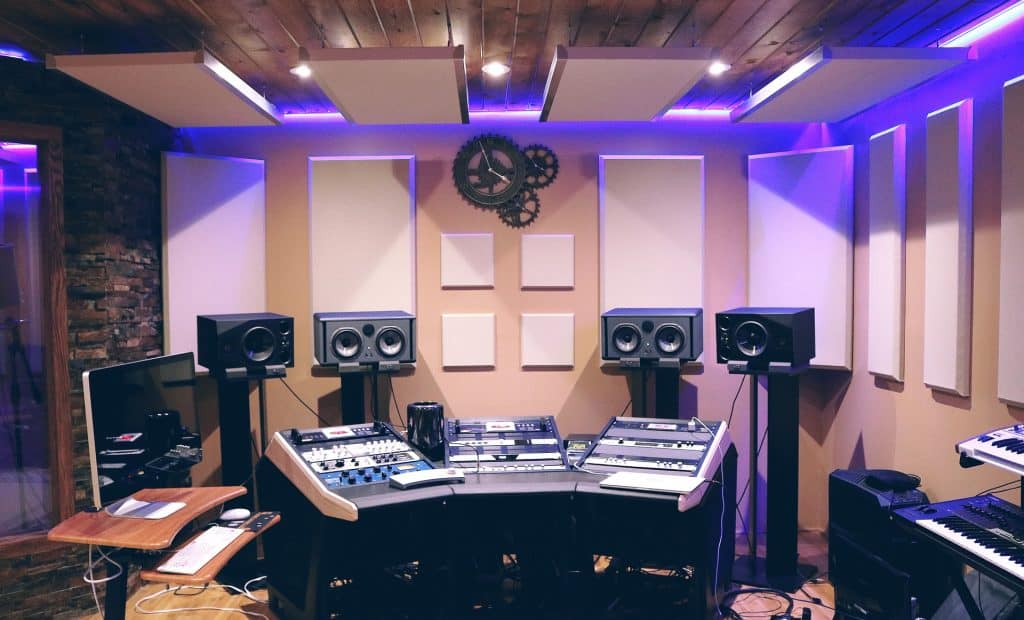When you hear professional recordings, it’s easy to understand why they sound so polished. You can clearly hear the instruments in the mix, and everything sounds balanced. The drums aren’t too quiet, and they have a nice thump. The vocals are crisp but not harsh sounding, and so on. In this article, we’ll cover some of the basics of studio recording as well as more detailed information about how to record in a studio with your band.
Check Your Gear Is In Good Working Order
Before you start recording, it’s a good idea to make sure your gear is in good working order. You should also check your cables and plugs. A loose connection could lead to recordings with buzzing or humming sounds. If there’s any chance that your cables have been exposed to moisture, replace them. If you need new cables, drums, guitars, mic stands, or other equipment, now is the time to buy. You don’t want to be going into the studio unprepared.
Make A Checklist Of What You Need To Take
One of the most important things to do before you head into a studio is to make a checklist of what you need to take. You’ll want to make sure that you have your instruments, equipment, and anything else that is needed for recording. This will help ensure that nothing is forgotten and everything will go smoothly once you’re in the studio.
Hold Plenty Of Rehearsals Before Your Record
Preparing for a recording session is more complicated than just showing up and playing. Before you show up at the studio, you want to make sure that you’ve rehearsed as much as possible. Why? This is your chance to work out any problems with your band. You also want to make sure that everyone has the songs memorized. It’s easier said than done, but it’s worth doing your homework ahead of time and preparing all of the songs before the session. This will help you sound better in the studio because the band will be familiar with the songs and know exactly what they need to do at every moment.
Take Advantage Of Drumming Rooms When Recording
Drumming rooms are rooms in the studio that have been designed for drummers to record their perfect sound. When you book a recording session, most of your bandmates will need to record their parts of each song separately unless you choose to record live. So, before you book your session, find out if the studio can provide a drumming room. When looking for the right space to record, there are plenty of options, but if you need to record the band and want to book a drumming room, check out PIRATE.
Consider Recording To A Click
A click is a metronome that you should use to keep time. When recording drums, you can use the click to make sure the drummer is playing at the right tempo. When recording guitars and bass, it’s important to always stay on time with the click. This will ensure that your song stays in rhythm and sounds good when it’s finished. The reason why most professional recordings sound so polished is that they were recorded to a click.
Use A Guide Track When Recording The Drums
One of the most important parts of a good mix is getting a clean, punchy drum sound. When recording drums at a studio, it’s necessary to use a guide track or click track. A guide track is just a loud click or beat that the engineer plays through an ear monitor while recording the drums. Guide tracks are necessary because they help keep the drummer on time and provide consistency in their playing. Without one, it’d be easy for things to get sloppy and out of sync.
Avoid Bringing Friends And Family With You
There are some things to consider before you go into the studio with your band. One thing you want to avoid is bringing friends and family members with you. These people may not know anything about recording in a studio, so they can’t really help you. They may also get in the way during the recording process. It’s best to keep it just your band and the engineer in the studio when you’re recording. You want it to be as easy as possible for the engineer to do their job without any distractions so that you get a clean recording.
Final Thoughts
One of the most important aspects of recording is to keep it as simple as possible. Recording should be about capturing the natural sound of instruments and vocals with minimal interference in the process. The more relaxed and comfortable the musicians are, the better the music will sound. Record the drums first, then guitars, vocals, and finally bass. After you’ve finished recording, it’s time to mix. If you choose not to use a click track for the drums, you will need to pay close attention to timing and tempo from one instrument to the next.

Jennifer Woods is a farmer of words in the field of creativity. She is an experienced independent content writer with a demonstrated history of working in the writing and editing industry. She is a multi-niche content chef who loves cooking new things.







